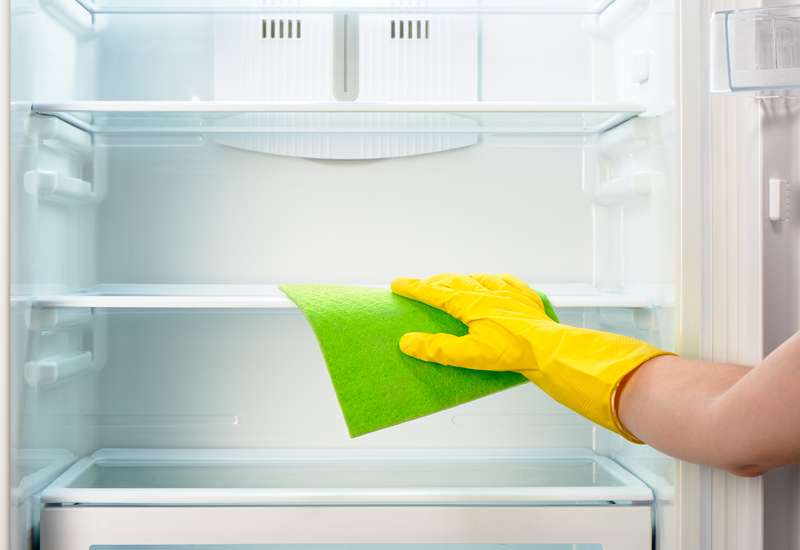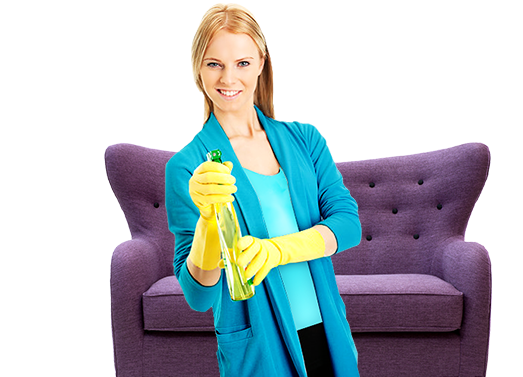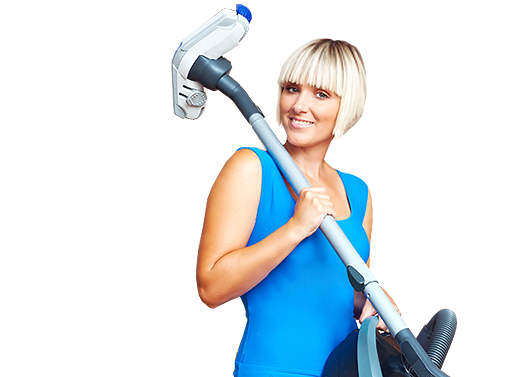Elevate Your Bathroom: Say Goodbye to Mold
Posted on 02/07/2025
Elevate Your Bathroom: Say Goodbye to Mold
Does persistent bathroom mold threaten your home's cleanliness and your family's health? Whether you just spotted dark spots on your bathroom wall or you're battling a musty odor that won't quit, you're not alone. Mold is a common yet stubborn problem in bathrooms everywhere. Yet, it's not an inevitable part of your life. In this comprehensive guide, you'll discover effective strategies to say goodbye to mold once and for all -- and transform your bathroom into a fresh, inviting sanctuary.

Understanding Mold: A Silent Bathroom Invader
Mold thrives wherever moisture lingers, making the bathroom a prime target. Bathroom mold can appear as black, green, or brown patches, especially around tubs, showers, sinks, and ceilings. Aside from looking unsightly, mold can trigger allergies, exacerbate respiratory issues, and cause structural damage over time. Knowing what you're up against is the key step towards maintaining a mold-free bathroom.
Why Does Mold Grow in Bathrooms?
- High humidity: Showers and baths release a lot of steam, raising humidity levels.
- Poor ventilation: A lack of airflow allows moisture to linger on surfaces.
- Frequent water exposure: Leaky faucets, pipes, or shower doors keep surfaces wet.
- Organic materials: Dust, soap scum, and even wall paint can serve as food for mold.
Understanding these causes is crucial when seeking to prevent bathroom mold and keep your space healthy.
How to Identify Bathroom Mold: Look Beyond the Surface
To elevate your bathroom, you need to recognize the signs of mold before it spreads. Here's what to look for:
- Visible spots: Patchy, fuzzy, or slimy stains, either black, green, brown, or even orange.
- Persistent musty smell: Even after cleaning, a damp odor lingers.
- Peeling paint or wallpaper: Mold may be growing underneath compromised surfaces.
- Warped drywall or tiles: Prolonged moisture leads to warping, and possibly hidden mold.
Suspect a hidden problem? Try a home mold test kit or contact a professional to thoroughly inspect your bathroom areas.
Proven Strategies to Say Goodbye to Mold in Your Bathroom
1. Optimize Ventilation
- Upgrade Your Exhaust Fan: Investing in a high-quality exhaust fan is your first line of defense. Run it during and for at least 20 minutes after a shower or bath.
- Open Windows: Whenever possible, open windows to allow fresh air to circulate and moisture to escape.
- Keep the Door Ajar: After using the shower or bath, leave the door open to facilitate drying.
Proper ventilation is essential in preventing mold from gaining a foothold.
2. Control Moisture and Humidity
- Wipe Down Surfaces: Keep a squeegee or microfiber towel handy. Wipe tiles, mirrors, and glass doors after every shower.
- Fix Leaks Immediately: Even a slow drip can create a permanent moisture problem; repair leaky faucets, pipes, and tubs promptly.
- Monitor Humidity: Invest in a bathroom dehumidifier or use a humidity sensor to keep levels below 50%.
When you cut down on moisture, you elevate your bathroom instantly and say goodbye to bathroom mold.
3. Smart Cleaning Habits for a Mold-Free Bathroom
- Weekly Cleaning: Don't skip your weekly bathroom scrub. Use anti-mold or mildew-resistant cleaning products, focusing on grout lines, tile, and shower doors.
- Don't Forget Curtains & Mats: Wash shower curtains, bath mats, and towels regularly. Opt for fast-drying materials to keep mold at bay.
- Clear Out Clutter: Fewer surfaces mean fewer places for mold to hide. Use wall-mounted storage or open shelving instead of multiple baskets or containers.
Consistency in cleaning is critical for keeping mold at bay and maintaining a pleasant, hygienic bathroom environment.
4. Seal and Protect Vulnerable Surfaces
- Seal Grout and Tiles: Use a waterproof sealant on grout lines and tiles at least once a year. This forms a barrier against water penetration and mold growth.
- Use Mold-Resistant Paint: When repainting walls or ceilings, select a high-quality, mold-inhibiting formula specifically designed for bathrooms.
- Upgrade to Mold-Resistant Materials: Consider moisture-resistant drywall (greenboard) and anti-microbial caulk for long-lasting protection.
Taking preventive measures adds longevity to your bathroom's beauty and functionality.
Natural Remedies: Eco-Friendly Ways to Get Rid of Mold
If you're seeking green alternatives to harsh chemicals, there are several natural mold removal methods that are both safe and effective:
- White Vinegar: Spray undiluted vinegar on moldy surfaces, let sit for an hour, then scrub and rinse. Vinegar's acidity naturally kills most mold species.
- Baking Soda: Mix with water to form a paste and scrub tiles and grout. Rinse thoroughly after cleaning.
- Lemon Juice & Essential Oils: Natural antifungal properties and pleasant fragrance leave your bathroom smelling fresh and clean.
- Hydrogen Peroxide: Apply 3% hydrogen peroxide to problem areas, let stand for 10 minutes, then scrub and rinse.
Always test a small area first to avoid damage, and wear gloves and proper ventilation when cleaning any mold.
When to Call the Experts: Professional Mold Removal & Restoration
Not all mold situations can be tackled with DIY methods. If mold keeps coming back, covers a large area (over 10 square feet), or penetrates deep into walls or ceilings, it's time to seek professional help. Mold remediation specialists can:
- Assess the extent of the damage and moisture source.
- Safely contain and remove affected materials.
- Provide expert restoration to return your bathroom to a pristine condition.
Professional intervention ensures that hidden and toxic molds are dealt with safely, protecting your health and saving you money in the long run.
Redesign Your Bathroom: Modern Upgrades for Mold Prevention
If you're planning a bathroom renovation, think ahead to create a mold-resistant bathroom with these smart upgrades:
Waterproof Building Materials
- Solid Surface Shower Walls: Non-porous acrylic, glass, or stone panels are easier to clean and less likely to harbor mold than tile and grout.
- Epoxy Grout: Unlike traditional grout that absorbs water, epoxy grout is highly water-resistant and inhibits mold growth.
- Properly Sloped Floors: Help water drain effectively in the shower to prevent standing puddles.
Smart Storage Solutions
- Wall-Mounted Vanities: Allow more floor space for airflow and less water splashing onto wooden cabinetry.
- Open Shelving: Reduces clutter, making cleaning easier.
Ventilation and Lighting Upgrades
- Motion-Activated Exhaust Fans: Ensure every user benefits from air circulation, even if they forget to flip a switch.
- Natural Light: Add windows or skylights. Sunlight inhibits mold spore development and quickly dries wet surfaces.
A few strategic design choices can elevate your bathroom and turn it into a perpetual mold-free zone.
The Hidden Dangers of Bathroom Mold: Why Immediate Action Matters
Many homeowners underestimate the risks of ignoring mold. But the longer you wait, the more serious the consequences:
- Health Risks: Mold spores exacerbate allergies, asthma, and respiratory infections, particularly for children, seniors, and those with weakened immune systems.
- Home Damage: Mold gradually destroys drywall, tiles, paint, and cabinetry, leading to costly repairs.
- Unpleasant Odors: Persistent musty scents can permeate towels, clothing, and adjacent rooms.
- Poor Aesthetics: Visible stains ruin the clean, spa-like feel you want in your bathroom.
Acting quickly ensures you maintain a safe, beautiful, and healthy home.

Frequently Asked Questions About Mold in the Bathroom
Is bathroom mold dangerous?
Yes. While not all molds are toxic, all can cause negative health effects and damage your home. Prolonged exposure should be avoided.
What's the fastest way to get rid of mold in my bathroom?
For minor mold, scrub the area with a mixture of white vinegar or hydrogen peroxide and water. For more stubborn or widespread mold infestations, consult a professional immediately.
Will a dehumidifier eliminate bathroom mold?
A dehumidifier reduces the moisture that mold needs to thrive but is most effective when combined with ventilation and cleaning.
Can mold come back after cleaning?
Absolutely, if the underlying moisture problem isn't fixed. Say goodbye to bathroom mold by addressing leaks, ventilation, and humidity control.
Should I use bleach to remove mold?
Although bleach kills surface mold on non-porous materials, it does not penetrate porous surfaces like grout or drywall. Vinegar or hydrogen peroxide is safer and more effective for most bathroom applications.
Conclusion: Transform Your Bathroom and Banish Mold for Good
Say farewell to persistent bathroom odors, unsightly stains, and the health hazards of mold. With diligent prevention, strategic cleaning habits, and smart design upgrades, you can elevate your bathroom to a new level of cleanliness and comfort. Remember:
- Keep moisture in check with proper ventilation and immediate leak repair.
- Adopt regular cleaning routines using anti-mold products or natural remedies.
- Upgrade surfaces and materials during renovations for lifelong protection.
- Act quickly at the first sign of mold to prevent long-term problems.
Elevate your bathroom experience. Say goodbye to bathroom mold. Enjoy a serene, fresh, and healthy space every day!




